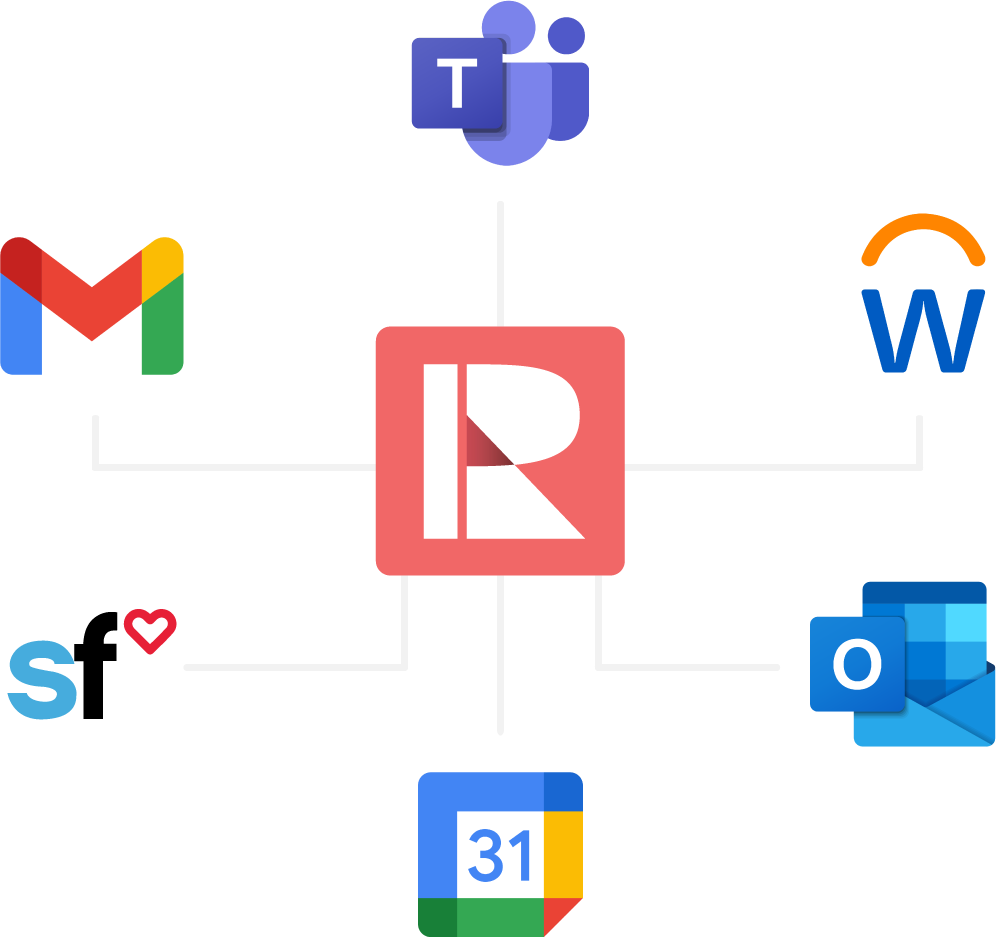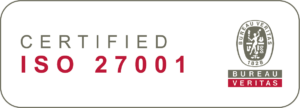At the stage of interview scheduling, you are close to one of the most important steps during the hiring procedure. However, your interview invitation emails are always the first impression on candidates, so neglecting meticulousness when scheduling interviews via email never sounds like a great idea.
Inevitably, mistakes will easily slip in at some point and mess up the whole effort you have put into your work as a recruiter. In this blog, Rakuna will share with you the top common mistakes that you can steer clear of and leverage in your interview process.
Why is Interview Invitation Emails Essential in The Hiring Process?
In general, an interview invitation email provides candidates with relevant information so they can be well-prepared for the interview process. It is a helpful tool for recruiters as well to improve candidate experience as a sign of respecting boundaries and avoiding bothering candidates with untimely interruptions.
When writing an interview invitation email, you can also support candidates by sparing them some time to deal with their business in general and their current jobs in particular. All in all, you can keep everyone on the same page with formal writing communication.
What Should be Included in Interview Invitation Emails?

Standard interview invitation emails normally include the following points:
- The title position: This is crucial to ensure clarity for the candidate regarding the role they are being considered for. It sets the context for the interview and helps candidates prepare accordingly.
- Your company’s name: Including the company name adds credibility and reinforces the employer brand. It also helps candidates identify the organization and further research its background.
- Interview format: Specify the interview format (e.g., in-person, phone call, video conference) to inform candidates of what to expect and how to prepare. It ensures that candidates are aware of any technology or equipment they may need for virtual interviews.
- Periods and days options to choose: Providing flexibility in scheduling demonstrates consideration for candidates’ availability and enhances the candidate experience. It allows candidates to select a time slot that best suits their schedule, increasing the likelihood of attendance.
- Location of the interview site: Providing detailed information about the interview location, including the address, building name, floor, and room number, ensures that candidates can easily find the venue. Including a map or directions further assists candidates in navigating to the interview site.
- The name and position of interviewers: Introducing interviewers by name and position helps personalize the communication and allows candidates to research and familiarize themselves with the interview panel. It also sets expectations regarding who they will be meeting with during the interview.
- Items candidates need to bring: Informing candidates of any documents or materials they need to bring (e.g., resume, portfolio) ensures that they come prepared and can showcase their qualifications effectively during the interview.
- The approximate duration of the interview: Providing an estimate of the interview duration helps candidates plan their schedule accordingly and allocate sufficient time for the interview process.
- Other notes/guidelines: Including any additional information or guidelines, such as dress code, parking instructions, or security instructions, ensures that candidates have all the necessary information for a successful interview experience.
Based on these elements, here’s how Rakuna would write our interview invitation emails. Check out our:
Collection of Top 10 Best Interview Schedule Email Samples Every Recruiter Should Have
3. What Mistakes May You Make When Writing Interview Invitation Emails and How to Avoid Them?
Lack of Opening:
Jumping straight into the topic will catch applicants off guard as to where this email is heading and divert them from the important information.
Sensibly, you can get started by appreciating their efforts to apply for the job opening in your company.
Then, you inform them of the interview stage by either stating that you have reviewed the materials you ran into or congratulating them on passing previous application rounds and would like to invite them to a meeting.
To ensure a positive candidate experience and set the right tone from the outset, it’s crucial to craft an engaging and appreciative opening. Here are some best practices to follow:
- Express gratitude: Start by thanking the candidate for their interest in the company and their application efforts. For example, “Thank you for your interest in joining our team at [Company Name].”
- Acknowledge their progress: If applicable, recognize any milestones the candidate has achieved in the application process. This could include passing previous rounds or assessments. For instance, “Congratulations on successfully passing the initial screening rounds!”
- Set the context: Clearly state the purpose of the email and inform the candidate about the interview stage. Whether it’s a first-round interview or a final assessment, provide clarity on what to expect. For example, “We are pleased to invite you to interview for the [Job Title] position.”
- Personalize the message: Whenever possible, personalize the email by mentioning specific details about the candidate or their application. This demonstrates genuine interest and attention to detail. For instance, “We were impressed by your experience in [specific skill or qualification], and we look forward to discussing it further during the interview.”
Subject Line Mistakes:
One of the critical errors in interview invitation emails involves the subject line. Without a well-crafted subject line, candidates may overlook or dismiss the email altogether, undermining the importance of the interview invitation. Here are three common mistakes to avoid:
- No subject lines: Omitting a subject line entirely leaves the email appearing unimportant and easily dismissible. Candidates may overlook it amidst the influx of other messages in their inboxes, leading to missed opportunities for scheduling interviews.
- Vague phrases: Subject lines filled with ambiguous or unclear phrases confuse job seekers, making it difficult for them to discern the email’s purpose. This lack of clarity can result in candidates disregarding the email or delaying their response, impacting the efficiency of the interview scheduling process.
- Excessive punctuation: Subject lines riddled with excessive punctuation marks or symbols risk triggering spam filters and relegating the email to recipients’ spam or junk folders. This not only reduces the email’s visibility but also diminishes the likelihood of candidates opening and engaging with it.
To craft concise and compelling subject lines. Here are some best practices to consider:
- Be direct and specific: Clearly convey the purpose of the email in the subject line to grab the candidate’s attention and communicate the importance of the invitation. For example, “Invitation to Interview at [Your Company’s Name].”
- Avoid ambiguity: Use straightforward language that accurately reflects the content of the email. Avoid vague phrases, wordplay, or cryptic messages that may confuse or deter candidates from opening the email.
- Maintain professionalism: While it’s essential to be concise, ensure that the subject line maintains a professional tone and reflects the company’s brand identity. Avoid using informal language or overly casual expressions.
- Personalize when possible: Incorporate personalized elements such as the candidate’s name or the specific job title to make the subject line more relevant and compelling to the recipient. This demonstrates attention to detail and fosters a sense of individualized communication.
- Test for deliverability: Before sending the email, review the subject line to ensure it adheres to best practices and is unlikely to trigger spam filters. Consider conducting A/B testing with different subject lines to determine which generates the highest open rates.
Get Facts Wrong:
One of the most detrimental mistakes recruiters can make in interview invitation emails is providing candidates with inaccurate information.
This oversight not only confuses candidates but also reflects poorly on the professionalism and organizational skills of the recruiting team. When candidates receive emails containing false details, such as incorrect interview times or misspelled names, it undermines their confidence in the hiring process and leaves them uncertain about the validity of the communication.
This can lead to wasted time and effort in back-and-forth correspondence to correct errors, as well as potentially discouraging candidates from engaging further with the company. Moreover, it leaves a lasting impression of disorganization and incompetence, which can damage the employer’s brand and deter top talent from considering future opportunities with the organization.
To avoid the negative consequences of sending incorrect information to candidates, consider:
- Double-check all details: Before sending interview invitation emails, thoroughly review the content to ensure that all information provided is accurate and up-to-date. Verify interview times, dates, locations, and any other pertinent details to minimize the risk of errors.
- Utilize proofreading tools: Employ spell-checker programs like Grammarly and QuillBot or enlist the assistance of a second party to review the email draft for any typos, grammatical errors, or inconsistencies. This extra step can help identify and rectify mistakes that may have been overlooked during the initial drafting process.
- Personalize communication: Take care to address candidates by their correct names and personalize the email content to reflect their circumstances. Avoid using generic templates or mass-produced messages that may increase the likelihood of errors or inaccuracies.
- Provide clear instructions: Clearly outline the next steps in the interview process and provide candidates with all necessary information to facilitate a smooth scheduling experience. This includes specifying any required actions on their part, such as confirming attendance or providing availability for alternative dates. The writer can list out information in bullet points for easy reading
- Establish a feedback loop: Encourage candidates to communicate any discrepancies or concerns they may have regarding the information provided in the email. Establishing open lines of communication can help address any issues promptly and maintain transparency throughout the hiring process.
Tone Problems:
Maintaining the appropriate tone in interview invitation emails is crucial for fostering a positive candidate experience. However, striking the right balance between formality and familiarity can be challenging. Here are two common tone-related mistakes to avoid:
- Overly formal greetings: Beginning the email with generic salutations such as “Dear Candidate” or “To whom it may concern” can come across as impersonal and detached, failing to resonate with candidates on a personal level. This lack of warmth may detract from the overall candidate experience and diminish the effectiveness of the communication.
- Excessive familiarity: Conversely, using overly personal phrases or nicknames or inadvertently sharing confidential information can create discomfort and give the impression of intruding on the candidate’s privacy. Maintaining professionalism and boundaries is essential to avoid crossing any lines and maintain the candidate’s trust and confidence in the hiring process.
To ensure that interview invitation emails strike the right tone and effectively engage candidates, consider the following best practices:
- Personalize the greeting: Tailor the salutation to each candidate by using their name and, when appropriate, their professional title. This demonstrates attentiveness and creates a more personalized connection from the outset.
- Use clear and concise language: Communicate information clearly and directly, avoiding jargon or overly complex language that may confuse or alienate candidates. Be mindful of the candidate’s perspective and ensure that the message is easy to understand and digest.
- Respect boundaries: Avoid delving into overly personal topics or sharing sensitive information that could compromise the candidate’s privacy. Maintain a professional demeanor and focus on relevant details related to the interview scheduling process.
- Review and revise: Before sending the email, review the content to ensure that the tone is appropriate and aligns with your company’s communication standards. Consider seeking feedback from colleagues or conducting a test run with a small group of candidates to gauge their response.
Insufficient Follow-up Options:

Another common mistake in interview invitation emails is inadequate follow-up options.
When recruiters fail to include alternative dates or times for the interview or neglect to offer flexibility in scheduling, it can severely restrict candidates’ ability to participate. This limitation not only hampers the recruitment process but also risks missing out on valuable opportunities to engage with top talent.
Without options for rescheduling, candidates may feel constrained and may even opt out of the interview process altogether, resulting in lost potential hires
To avoid this pitfall and ensure a smooth interview scheduling process, recruiters should prioritize providing multiple options for scheduling and demonstrating flexibility. Recruiters can leverage the candidate self-scheduling function available in interview scheduling software like Rakuna. This feature allows candidates to view available interview slots and select the time that best fits their schedule, eliminating back-and-forth communication and expediting the scheduling process for both parties. By
4. Technology to Help You Minimize These Mistakes:

Here in Rakuna, we would like to offer recruiters options of interview scheduling software with automated messaging and personalization capabilities.
With this interview scheduling solution in your hands, you can both optimize your productivity levels and enhance your candidate experience with appealing benefits such as cost-free services and feature integration.
About Rakuna’s Interview Scheduling Software
Ready to adopt an interview scheduling tool? Let’s skip the searching and see what Rakuna has to offer:
The All-In-One Interview Scheduling Solution
Designed for every interview format, Rakuna’s Interview Scheduling Software transforms the scheduling process into a seamless experience. Rakuna is optimized to help you schedule and keep track of all interviews on one platform, no matter the interview type.
Provide The Best Experience For Everyone
One central hub for recruiters to streamline and automate the entire scheduling process for all parties involved:
- Recruiting Coordinators: Have full control in managing interviews in one streamlined platform
- Candidates: Schedule and reschedule interviews at the click of a few buttons
- Interviewers: Easily confirm interviews/ request reschedule, share your calendar availability, and show up to the right place, at the right time
- Talent Acquisition Leaders & Hiring Managers: Quickly make decisions based on comprehensive and real-time data
Simple to Use, Easy to Integrate
As a standalone product, our Interview Scheduling Software can solve the scheduling challenges well. But we can always go further. Expand your recruiting suite by integrating Interview Scheduling Software with your chosen solutions or other Rakuna recruiting products.
Ready to see Rakuna’s Interview Scheduling Software in action? Book a FREE Demo today!
Wrapping Up
Even when your recruitment mission nears its end, trouble-inducing mistakes while you arrange interviews by email will still occur at a troubling rate. Hopefully, you can take full advantage of this list to maximize the efficiency of this stage and save both parties’ time.


